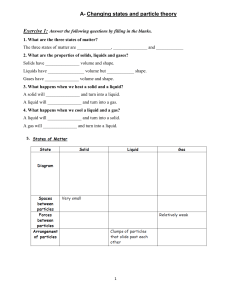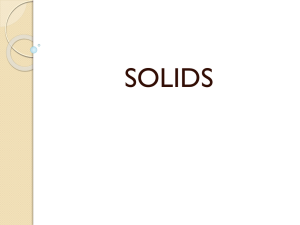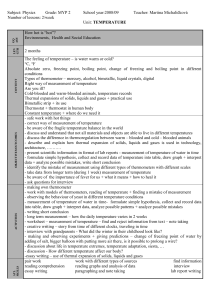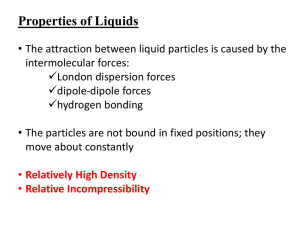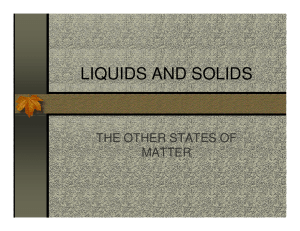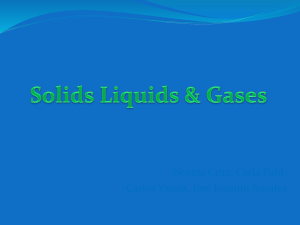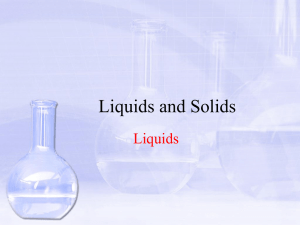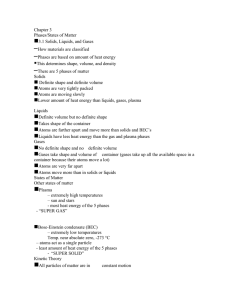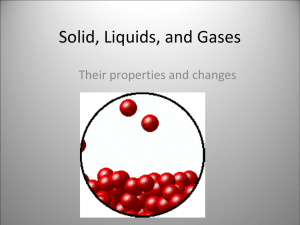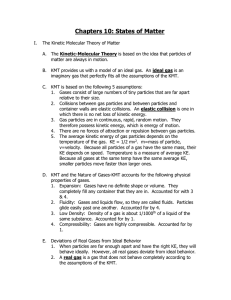Chapter 11 Lesson 3: Physical Science
advertisement
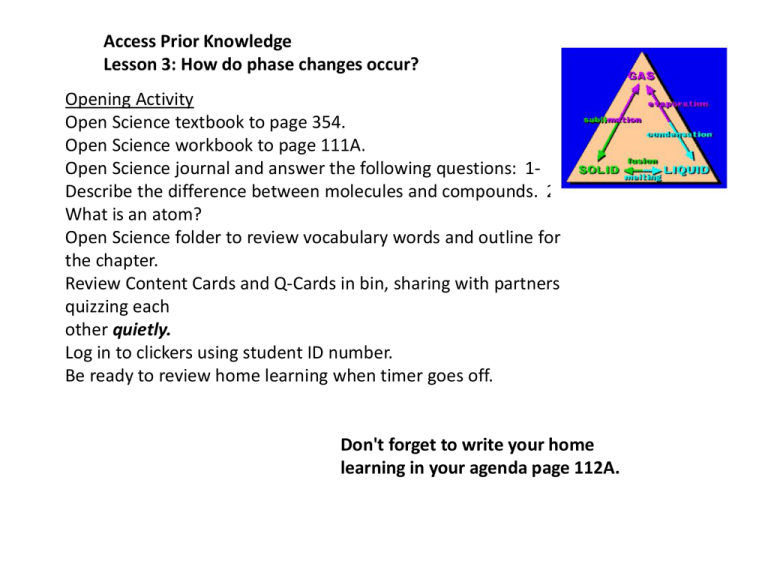
Access Prior Knowledge Lesson 3: How do phase changes occur? Opening Activity Open Science textbook to page 354. Open Science workbook to page 111A. Open Science journal and answer the following questions: 1Describe the difference between molecules and compounds. 2What is an atom? Open Science folder to review vocabulary words and outline for the chapter. Review Content Cards and Q-Cards in bin, sharing with partners quizzing each other quietly. Log in to clickers using student ID number. Be ready to review home learning when timer goes off. Don't forget to write your home learning in your agenda page 112A. Do you agree with the statement? Unlike liquids, solids have their own volume and shape. YES NO Do you agree with the statement? The freezing point of a liquid is a chemical property. YES NO Do you agree with the statement? In gases, the atoms or molecules are far apart. YES NO Do you agree with the statement? The boiling point of a liquid changes with the amount of liquid. YES NO Solids and Liquids Solids have a definite shape and volume with particles vibrating in place. As temperature rises, solids melt and turn into liquids. Liquids have a definite volume with forces holding particles close but still flowing past each other taking shape of the container. Solids and Liquids Freezing/Melting Point is the temperature where solids freeze or melt, and is another physical property. You can lower the freezing point of water by adding salt. Materials change size when they change room temperature because the hotter it gets the faster the particles move and spread apart. The cooler it gets the slower the particles move and the less space between them. Gases Gases do not have definite shape or volume and the particles spread far apart. Evaporation is when liquid turns to gas by raising temperature. Condensation is when gas turns to liquid by lowering the temperature, like in clouds or dew. Another physical property is boiling point, temperature when a liquid turns into a gas. Boiling points are the same even if you have different amounts of material. Steam from water boiling is small drops of water in a gas phase called water vapor. BRAIN POP: Matter Changing States MatchQuest SOLID LIQUID GAS TextQuest Answer in your Science Journal 1. What happens to some materials as they cool? 2. What causes particles in ice to go from being close together to far apart? 3. When does dew form? 4. Describe the difference between evaporation and condensation. Don't forget to write your home learning in your agenda page 112A.
